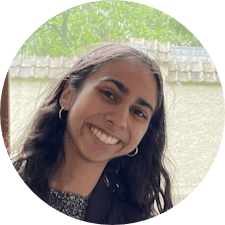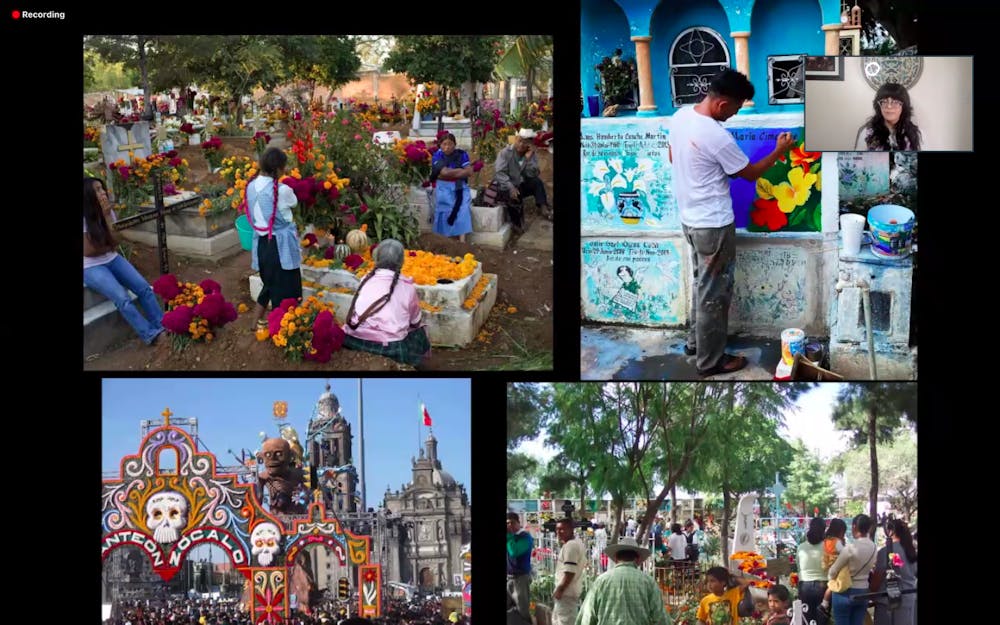Co-founder of the Death Positive movement Sarah Chavez visited Brown virtually Monday evening, kicking off a three-part event series the Haffenreffer Museum of Anthropology is co-sponsoring with Rhode Island Latino Arts and Providencce Parks in honor of Día de los Muertos, which is celebrated Nov. 1 and 2. Her talk, “Día de Muertos: A History of Resistance,” focused on the tradition, culture and opposition surrounding contemporary and pre-colonial celebrations of the dead.
“It is such a rich and also kind of complicated, nuanced history,” Chavez said in the presentation.
Along with her work as a museum curator and writer, Chavez is a founder of The Collective for Radical Death Studies and a host of the podcast Death in the Afternoon. She is also a founder of the Death Positive movement, which encourages people to speak openly about death and dying instead of treating them as taboo subjects. “Everyone’s own practice and belief is a very individual thing,” she said.
Chavez began the talk by describing the culture of Mexico’s Indigenous peoples before Spanish colonization. To these diverse groups, “the dead remained vital members of the community,” Chavez said. In contrast with European treatment of the dead as a source of contamination to remove, Indigenous Mexican cultures connected the dead with life, burying them under homes and in communal areas. As Chavez said, their treks to final destinations in the afterlife were “every bit as real as the world we inhabit now.”
Next, Chavez discussed colonization and Spain’s attempts to eradicate Indigenous Mexican cultures. It seemed as if colonizers launched a “targeted attack” on the customs of Día de los Muertos, Chavez said, creating mandatory burials, forbidding mourning practices and capping funeral expenditures. Yet Chavez was quick to acknowledge the determination of Indigenous peoples to preserve their cultures. Given what these communities endured, she said, “it’s really incredible that we have some version of their practices today.”
Although contemporary Día de los Muertos practices in Mexico are strained by what Chavez called a “grief over loss of language, culture and spiritual life,” their success in bringing families, communities and the dead together persists. Many Mexicans still parade candles through the streets and bake pan de muerto, a traditional holiday treat, Chavez said. The scent of the cempasuchil flower, a type of marigold, features in Día de los Muertos celebrations, and cemeteries, as Chavez said, are still “bustling with activity” and “full of life.”
On the first day of the celebration, children who have passed are believed to visit their living families. On the second day, the adults are believed to visit. Families place ofrendas, which are gifts such as food and flowers for the dead, on altars, “sacred and powerful” spaces, according to Chavez. “You’re creating a portal between the living and the dead,” she said.
When outlining Día de los Muertos practices in the United States, Chavez had a very different story to tell. Widespread celebration did not begin until the early 1970s with the emerging Chicana movement, a response to the Vietnam War in which Mexican-Americans advocated for social and political empowerment through honoring their cultural heritage. Even today, Chavez said, “Día de los Muertos practices in the U.S. continue to be rooted in activism and social issues.”
Adeline Allen ’25, an attendee of Monday’s talk, found Chavez’s discussion of the Chicana movement to be one of the most surprising parts of the event. “It’s interesting how identity and identity politics play into cultural celebrations and how we view them,” she said.
Chavez ended the event by reiterating that the current “colorful characterization” of Día de los Muertos in popular culture fails to consider the history of death culture in Mexico. She also added that those who frown upon Mexican death culture, including many people living in the U.S., “have not been afforded the privilege of denying or hiding from death.”
The Haffenreffer Museum of Anthropology, which partnered with The Collective for Radical Death Studies to organize Monday’s talk, will hold the second event of its three-part series on Saturday, Oct. 30 in partnership with Rhode Island Latino Arts and Providence Parks. Members of the Brown and RISD community are invited to create tissue-paper cempasuchil flowers at Manning Hall. By beginning the series with a virtual event, the museum was able to increase accessibility for some attendees, as well as Chavez herself, who actually tuned in from California, according to HMA Manager of Museum Education and Programs Leah Burgin MA’17. “We’ve had people enjoy our programs globally in a way that hasn’t really happened before,” Burgin said. The third and final event consists of the official Día de los Muertos celebration, which will take place on Tuesday, Nov. 2 at North Burial Ground and is open to the public.
Clarification: A previous version of this article stated that the event was sponsored solely by the Haffenreffer Museum. The series is co-sponsored with Rhode Island Latin Arts and Providence Parks.

Rya is an Arts & Culture editor from Albany, NY. She is a senior studying English and Literary Arts, and her favorite TV show is Breaking Bad.





